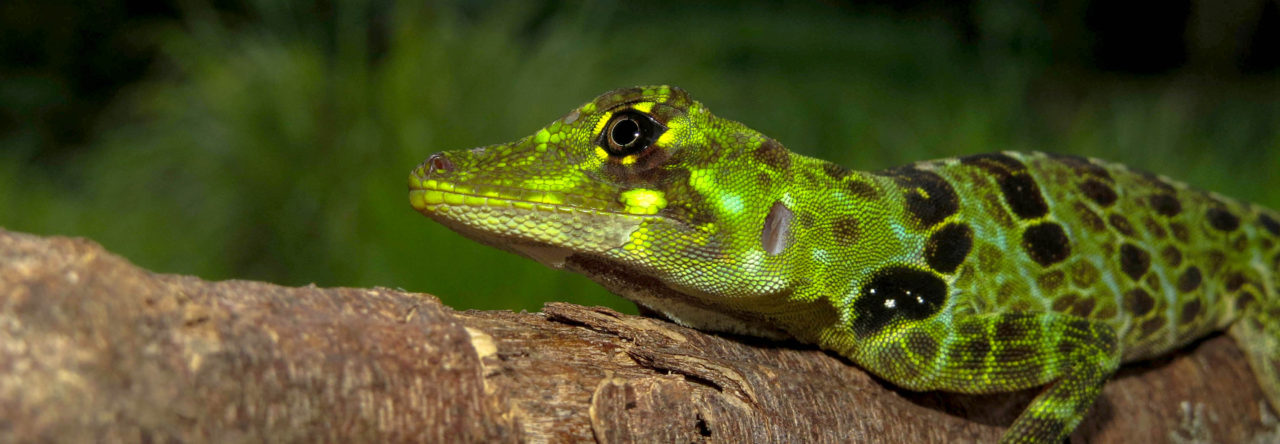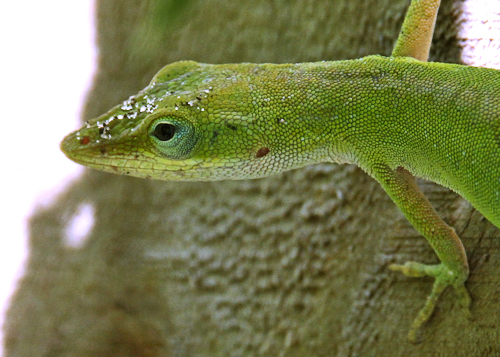
Anolis cybotes, female from Barahona, Dominican Republic
Katharina Wollenberg Valero & Ariel Rodríguez
Thermal adaptation is the evolution of the ability to persist in novel thermal environments. Phenotypic characters that allow such adaptation, as well as the resulting shifts in the geographic distributions of species, are an emerging field of study in the midst of a changing global climate. Yet, the genomic basis of such phenotypic adaptation is less well understood, so recent efforts of evolutionary biologists are now aiming at one emerging question: Which genes determine thermal adaptation, and are these the same across different populations and species? Luckily, Anolis is yet again at the forefront of novel discoveries being made in this field (see Campbell-Staton et al., 2017).
Many studies have independently identified genes that are responding to changes in the thermal environment, be it through change of expression under an acute stress, or through changes in the DNA sequence as evolutionary response. In 2014, we gathered information on such thermal adaptation candidate genes from Drosophila to Homo sapiens from the literature.
From the published evidence, we extracted a set of gene functions that potentially underlie climatic adaptation. We were able to match these with functions that are known from phenotypic thermal adaptation (Wollenberg Valero et al., 2014). Interestingly, the products of these genes (Proteins, RNAs) were found to be functionally related with each other thus forming gene networks within the cellular environment.
The Caribbean Anolis cybotes is widely distributed across Hispaniola, and thrives in hot, xeric environments just as well as in cooler and more humid montane environments. The rift valley of Lago Enriquillo heats up to 40.5 °C (104.9 °F), and a few instances of frost were reported at the highest peak (Pico Duarte at 3,098m elevation) – so population survival across these climatic extremes does not seem to be a trivial endeavor.
Populations of this species show pronounced differences between montane and lowland forms in morphology, physiology, behavior, and perch use (Wollenberg et al., 2013; Muñoz et al., 2014), which led us to expect that at least some of this variation should have a genetic basis. Thus, we set up to test whether Anolis cybotes displays any signatures of genomic adaptation to the diverse kinds of environments it inhabits, and whether any genes showing evidence for selection can also be subsumed under the candidate functions we defined previously.
We sampled tissue of these lizards from several high and low elevations (the specimens being the same as in Wollenberg et al., 2013), and looked for variation according to climatic differences via RAD sequencing and subsequent analysis with LFMM. RAD sequencing generates a reduced representation of the target genome, producing thousands of short sequences representing the distribution of the restriction enzyme’s cutting sites throughout the genome. Owing to this property, it cannot be expected that this type of data will necessarily contain “the total set of adaptation genes”; to this effect, detailed genome sequencing is required and such studies have been done in some model organisms (stickleback fish, beech mice, Drosophila, etc.).
Read More





















